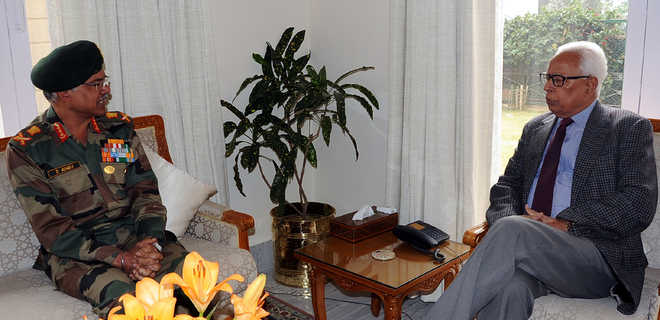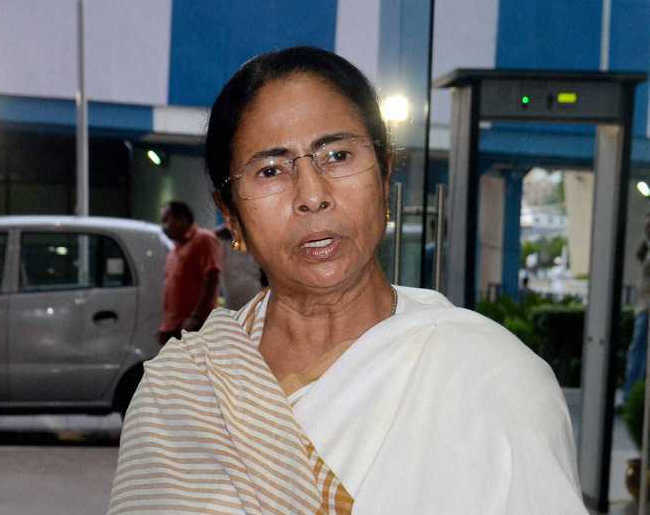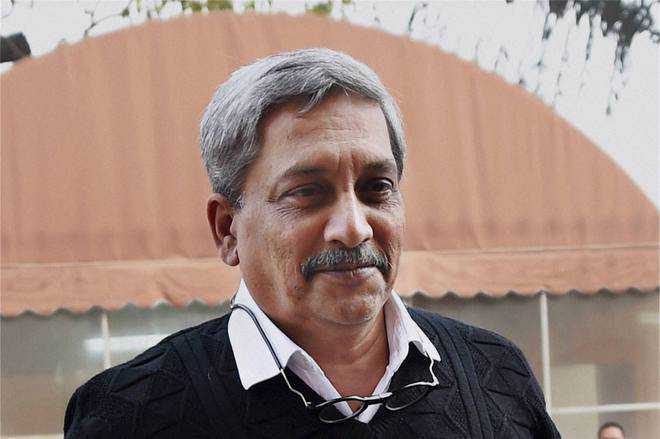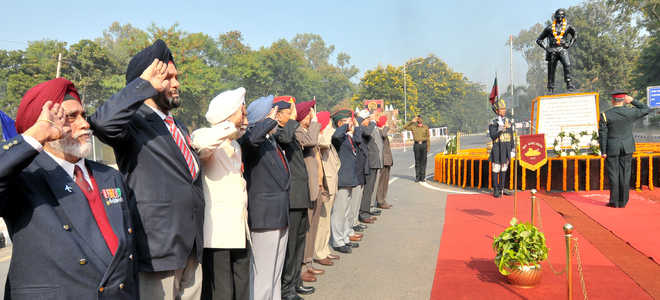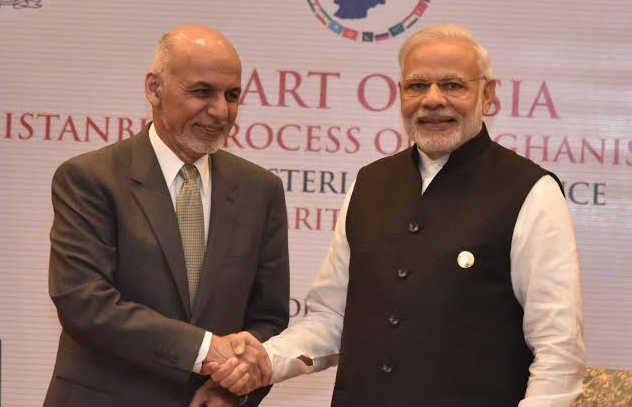‘The devious minds across the border will test us to the hilt, but in the course of that will offer us opportunities for which we must be prepared,’ says Lieutenant General Syed Ata Hasnain (retd), who commanded the Uri Brigade, the Baramulla Division and the Srinagar-based Chinar Corps.

At the outset it is important to clarify that the term fidayeen is being used in this essay as a means of convenience. It does not sanctify the sneak actions of terrorists.
The fidayeen phenomenon is not new to the Jammu and Kashmir scenario. We first witnessed the employment of these suicide terrorist squads launched by Pakistan as part of the proxy war as an adjunct to the operations in Kargil in 1999.
The Indian Army was already stretched. 8 Mountain Division had redeployed to the Kargil heights laying bare the vast area of North Kashmir whose responsibility then fell to the Rashtriya Rifles Victor Force which was essentially responsible for operations in South Kashmir.
By infusing small groups of suicide terrorists Pakistan hit the rear areas of 15 and 16 Corps North and South of the Pir Panjal. Garrisons were then without any perimeter obstacles and access control at gates was not of a high order.
We had a series of setbacks forcing us to redefine perimeter security and access control while deploying a much larger strength on the security of assets in the rear which included ammunition and other logistics dumps, including gun areas.
It was what Operation Gibraltar of 1965 may have hoped to achieve which Pakistan achieved to some extent in 1999. The high octane security scenario lasted almost till 2006 although the most intense period was 1999 to 2003.
I digress to explain that the proxy war we have been subjected to is not a conventional conflict situation.
It is the ideal manifestation of hybrid war where different domains of the conflict spectrum are energised as threats; the composite effect is what is happening right now.
A feeling of being boxed in, with lesser options each time.
Fidayeen actions are a subset of this strategy and add to the claustrophobia.
Unless we learn to view this from a comprehensive and long term angle, this feeling of limited options will continue.
The Uri attack set in in motion a series of events which have seen different levels of violence.
Baramula, Langaiyat and Pampore, before it shifted to the LoC with heavy fire assaults and actions by Pakistan’s Border Action Teams including mutilation of two Indian soldiers.
A total of 26 Indian soldiers and BSF men have died since the launch of the surgical strikes.
It is also true more Pakistani soldiers have died in actions by the Indian Army, but this is neither a zero sum game nor a game of numbers.
Pakistan, or at least the Pakistan army, continues to believe that it can win this war by slowly bleeding India through the terror strikes and enhancing the alienation of the Kashmiri people against India.
This is the strategy which dates back to the time of Zia-ul Haq and was first evolved in 1977 as the slated retribution against India for the loss of Bangladesh and defeat in the 1971 Conflict.
India has suffered for the last 27 years while the initiative has invariably remained in the hands of the troublemakers from across the border.
Failed peace efforts and mistakes in testing India’s threshold of tolerance have kept Pakistan on tenterhooks too, but India has been unable to hurt it sufficiently to deter further pursuance of proxy war.
It is in the light of all the above that the Nagrota strike on November 29, 2016 should be viewed. This is the third major terror strike against India’s defence installations in 2016.
Uri led to the surgical strikes on September 29, 2016, resulting in the heating of the temperature at the LoC and in the hinterland and Nagrota showed that the deterrence effect was minimal.
Three things are proved from this. The enhanced Pakistani sponsored and led activity is a tacit admission that the surgical strikes were a success, not necessarily in the strategic domain, but definitely in the operational one.
The outgoing Pakistan army chief General Raheel Sharif could not have gone home without avenging the strikes even as he denied them.
Secondly, Nagrota was apparently a farewell event for Raheel Sharif even as he hoped to put his successor in a state of compulsion to follow his rogue policy.
Thirdly, to expect a strategic effect in terms of deterrence from a single set of surgical strikes which were just trans LoC in scope may be naïve on the part of the planners and thinkers in India’s strategic community.
Deterrence can only be achieved if the demonstration hurts, and hurts badly.
The demonstration (surgical strikes in this case) has to be combined with a mix of measures in other domains — diplomatic, economic, psychological and social — before it takes full effect.
The failure to deter should not discourage our planners because it now gives leeway to expand the scope of response and there is an entire spectrum available for that.
The response to Nagrota will mean upping the escalatory ladder with measures to strike deeper, with more deadly intent and combine these with fire assaults over a period of time, especially in areas where we dominate the ground completely, such as in the Nilam Valley.
The escalation should not worry us as we have to be prepared for the eventual spread to the Punjab border too. There is no doubt that the people in border areas will suffer the ill effects of a permanent breakdown of the informal ceasefire.
Unfortunately, that is where the options wear thin and suffering on both sides will be intense. That offers scope to launch well-conceived and prepared psychological operations targeting the villages and families on the other side of the international border and LoC.
Since this essay advocates preparation for the long haul it is only correct that the army and all other security forces review their garrison security.
Infrastructure improvements if required even with long term security must be invested in.
Night surveillance equipment available with a range of Indian vendors must go beyond exhibitions at FICCI and Northen Command Melas and actual procurement must be done.
The rear areas be treated with a degree of respect as areas potentially equally vulnerable.
The report of the Philip Campose Committee set up after Pathankot must be perused seriously and Parliament kept informed of the measures that have been taken to strengthen rear area/garrison security.
Accountability for penetration by fidayeen must be fixed and necessary action taken against the command chain every time it occurs.
A trifle unfair due to equipment and infrastructure deficit, but when the chips are down armies rely on the kinetics of their own self-generated energy.
The last message from any pragmatic analysis of Nagrota would point at the inevitability of the long haul and the need for national stamina.
The devious minds across the border will test us to the hilt, but in the course of that will offer us opportunities for which we must be prepared.
The long march to peace has not even started and Nagrota signifies that.
Lieutenant General Syed Ata Hasnain (retd) is now associated with the Vivekanand International Foundation and Institute of Peace and Conflict Studies.
IMAGE: Reinforcements arrive to neutralise the terrorists at the army base in Nagrota, November 29, 2016. Photograph: PTI
